Review: "Under Our Moon Future Ascensions" at ANTI-AESTHETIC Dec 14th, 2019 – Feb 15th, 2020
The “Stuff” of Conversation
Kathleen Caprario, February 16th, 2020
As I walk into Downtown Eugene’s newest gallery, Eugene Contemporary Art’s ANTI-AESTHETIC, I’m welcomed into a space that holds the work presented in it with thoughtful consideration and ease. The inaugural exhibition, “Under Our Moon Future Ascensions,” features members of the University of Oregon’s Master of Fine Arts program—Sajad Amini, Dana Buzzee, Agnese Cebere, Eden V. Evans, Noelle Herceg, Erin Langley, Ian Sherlock Molloy, Hannah Petkau, Tyler Stoll, Elnaz Talaei, Nathan Alexander Ward, and Carol Yahner—and is an invitation to join in on a rich conversation articulated through the artists’ varied practices.
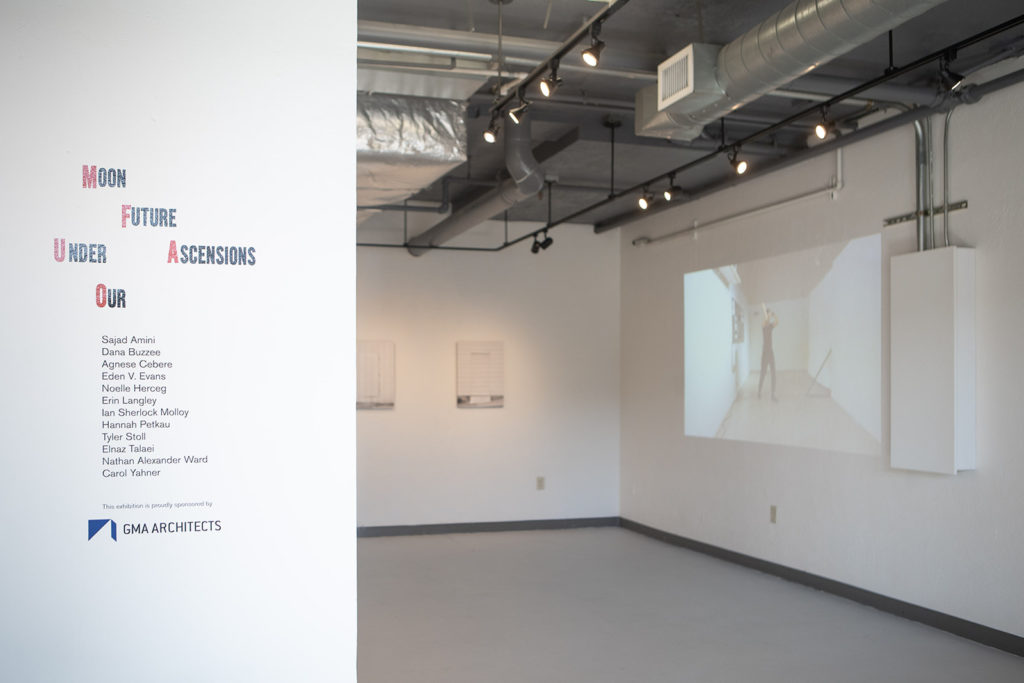
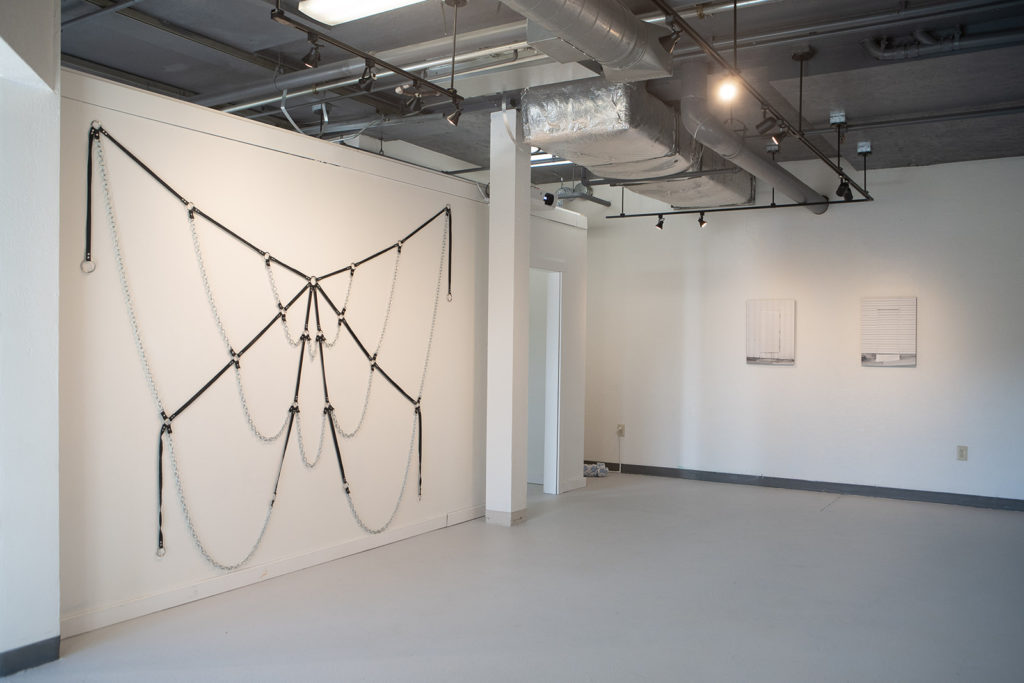
There is a connective tissue that runs throughout the show, an underlying dialog between makers and materials that creates a sequenced and cumulative experience of the whole as well as the singular viewing of any individual piece. But what exactly is it? I look and listen intently as I contemplate and respond to the work as a physical sensation that triggers memory, metaphor and possibility.
Immediately to my left as I enter the gallery I spot a small television monitor on the floor amid wound cleaning gauze splattered with indigo and scent. A video of retreating waves, in slow motion, plays on the monitor its rhythm simultaneously soothing and troubled. Something is missing, lost. Perhaps that is the intention within Eden V. Evans’, Pool Party—to bring renewed awareness of what is no longer as it transitions and becomes something else.
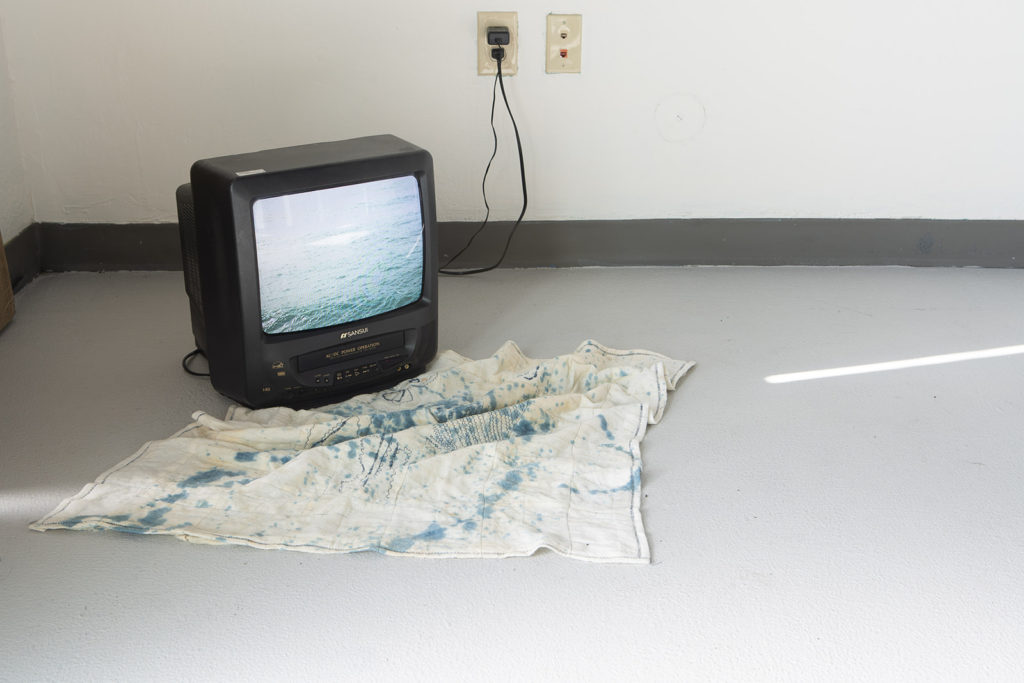
Several of the works exhibited engage a decisive use of media and materiality. The additively-built, bas-relief and very tactile surfaces of Erin Langley’s, Galore, presents its relatively small self unapologetically and occupies its area with physical confidence. Colorful, non-objective blobs and gestures evidence its maker and state its own, bold agency. It is itself. In contrast, Noelle Herceg’s, Scrunched1, a mid-size, mixed media wall piece, plays with what is not seen, what is hidden just under its surface. The organic media used—cabbage—rots underneath the work’s shroud-like surface and the resulting discoloration and dimpled surface texture create a contemplative mediation on the temporality of all things—I dare not look behind the cloth, lest I see the future…
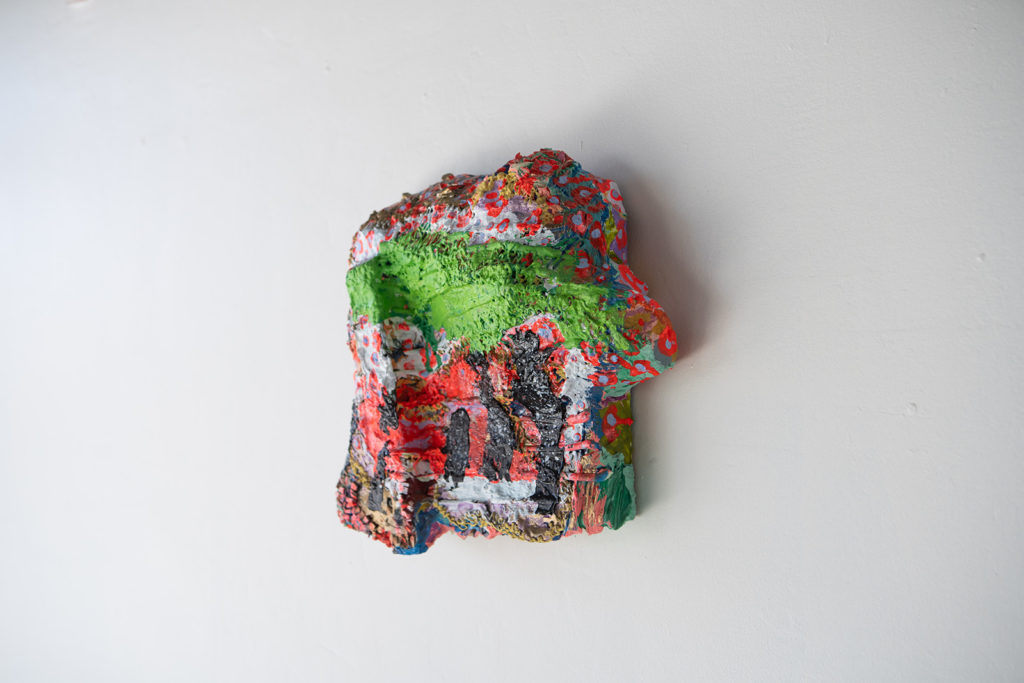
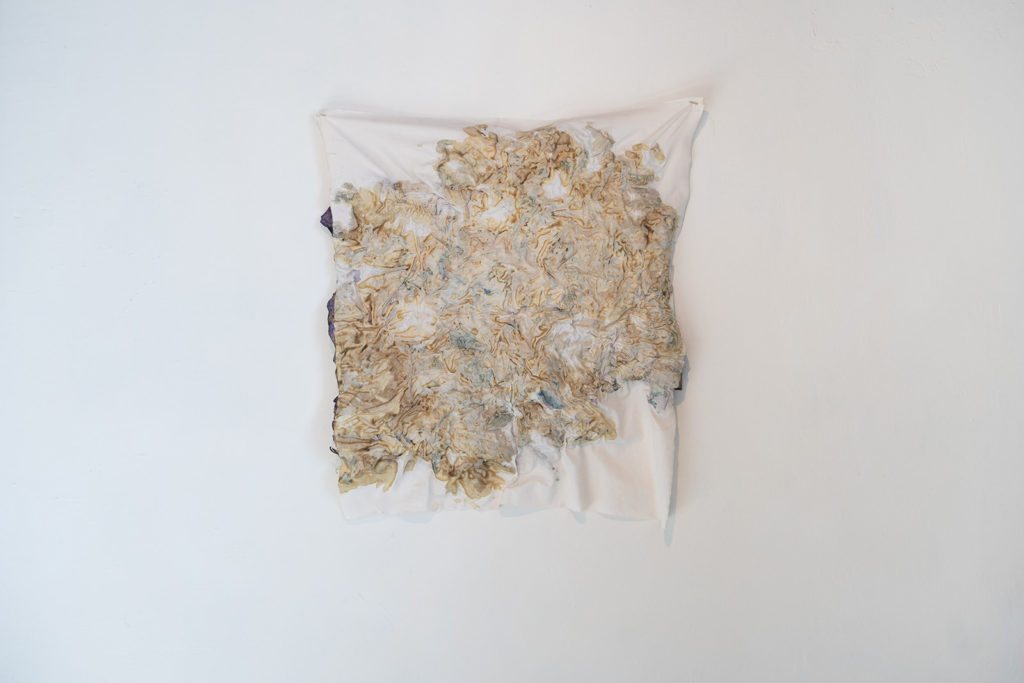
The achromatic, flag-like form of Hannah Petkau’s, segments, is positioned and propped against the back wall of the gallery’s entry area; the wood fragment patterns, subtly applied using graphite frottage, partially reveal themselves from inside tubular folds of white silk. Does the work’s position and white silk material designate surrender or is it to be raised as a standard and call to action? My own sense of hope or despair completes the intention.
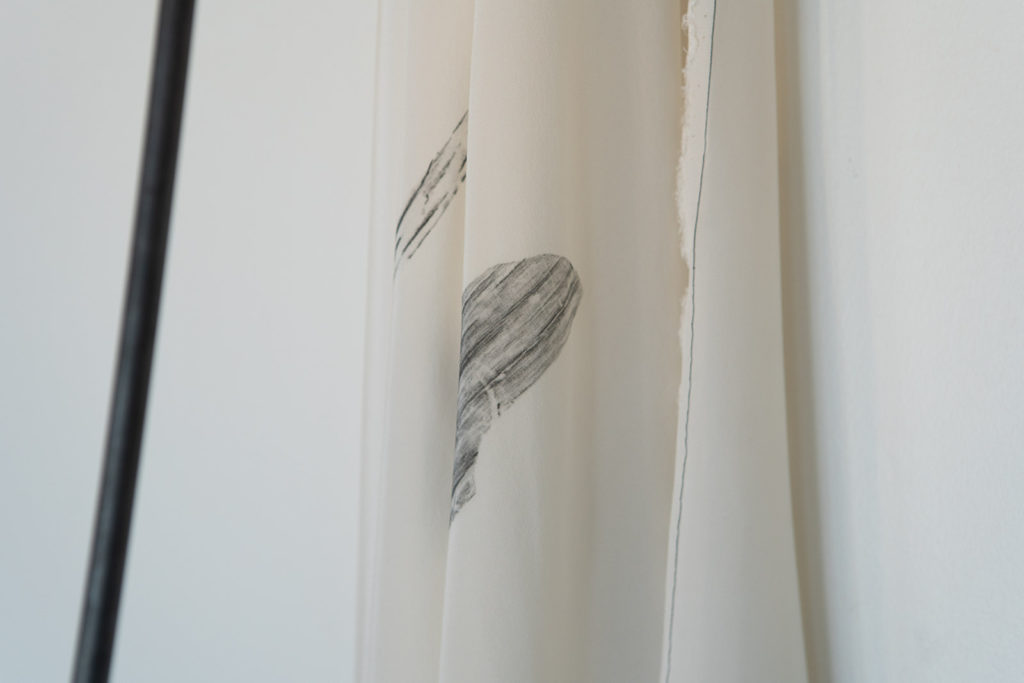
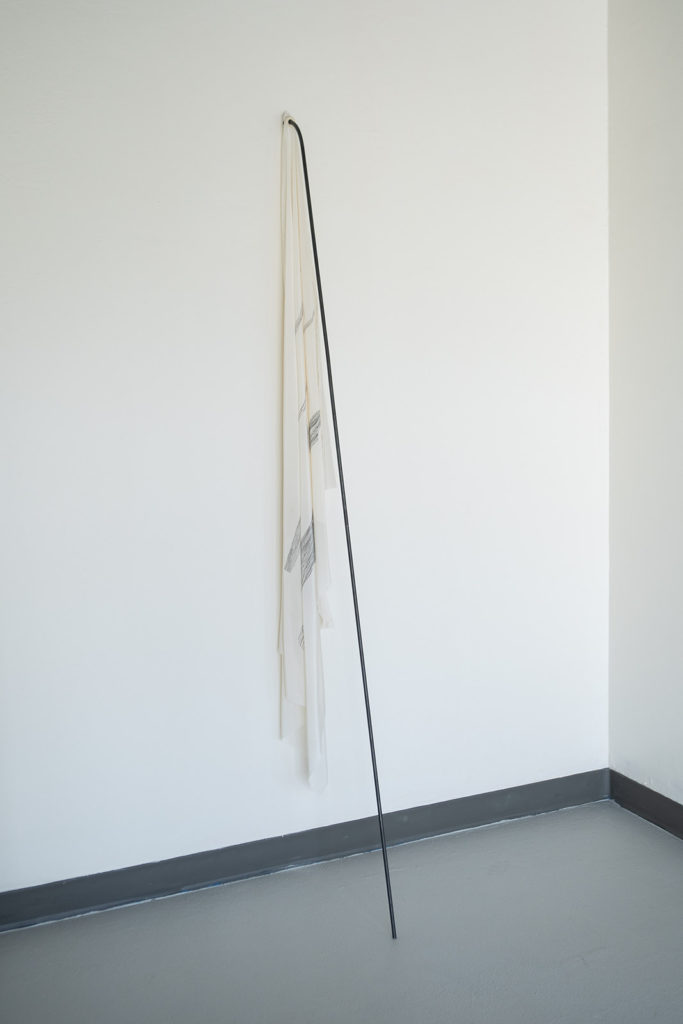
Black and white photography has always intrigued me, perhaps because I find it so remarkable that I often accept achromatic images as real and factual despite their being neither. The subjects of Nathan Alexander Ward’s two mid-size, seemingly symmetrical, archival pigment prints, Door/Wall, are exactly that—doors and walls—simple, right? Not so fast. Visually, the vertical and horizontal patterning of the pictured facades nearly masks the doors as subjects and challenges our perception of their function and space. In Ian Sherlock Molloy’s photographic prints, Untitled Triptych, the works’ intimate scale and a quiet palette of whites, blacks and modulated grays draw me in like the first line of a beloved poem. A man’s back and an overgrown landscape are both familiar and enigmatic as seen through Molloy’s personal lens.
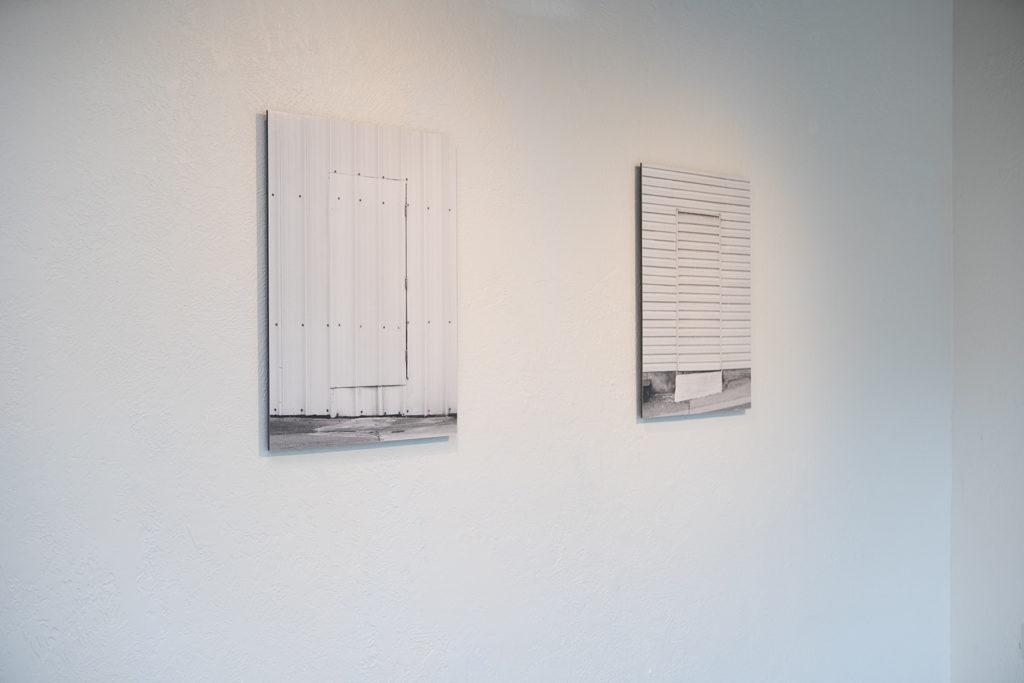
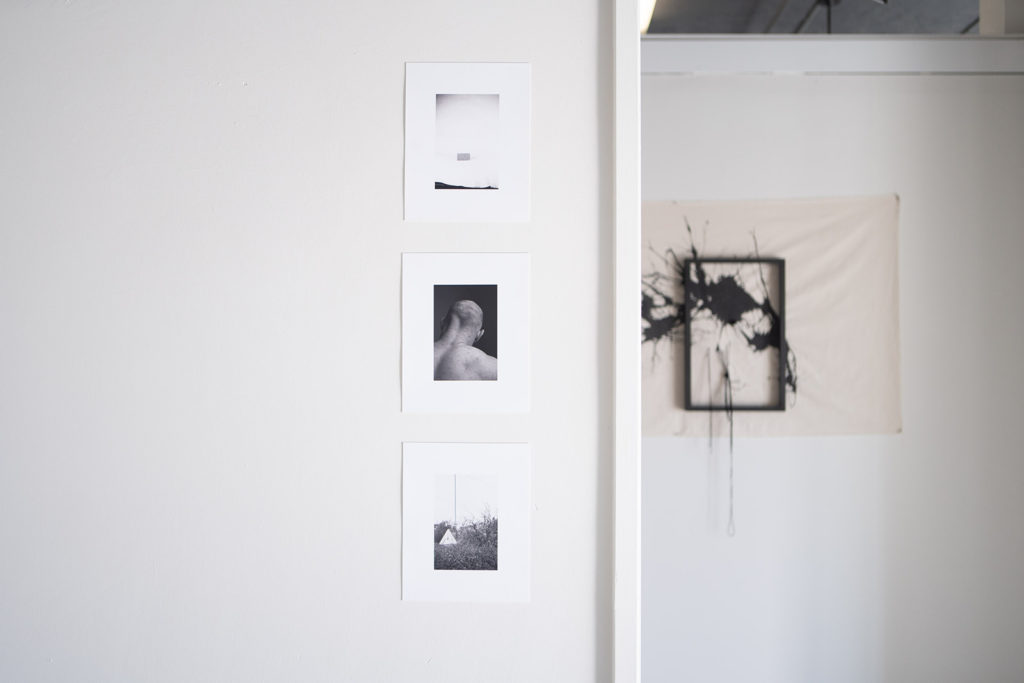
The abstracted physiology in Carol Yahner’s modest-sized oil on wood panel, Untitled, is expressed using muted, but clean pastel colors over which energetic, umber-colored line work suggests something biomorphic and familiar, yet alien and not fully known. Like a sheet of connective tissue beneath the skin that attaches, stabilizes, encloses, and separates muscles and other internal organs, Yahner’s visceral brushwork is the fascia that holds the form of the painting and its internal (both physical and psychological) associations as one. Continuing with the notion of internal systems, there’s a playfulness perceived in Tyler Stoll’s aptly titled, Plumbing, that belies its commentary regarding gender, privilege and expectation. A pair of floor-to-ceiling printed floral pipes seems at home in the gallery and its semi-industrial aesthetic. The patterned and soft feminine veneer that sheaths the trope of the more masculine and straightforward forms surprises and delights, their cultural narrative hidden in plain sight.
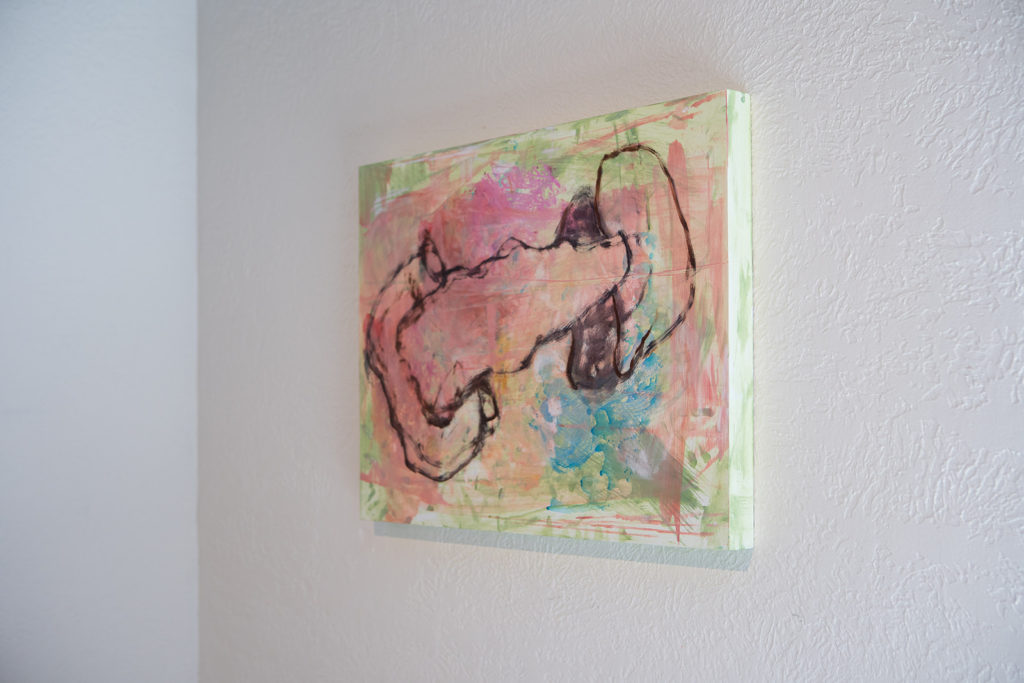
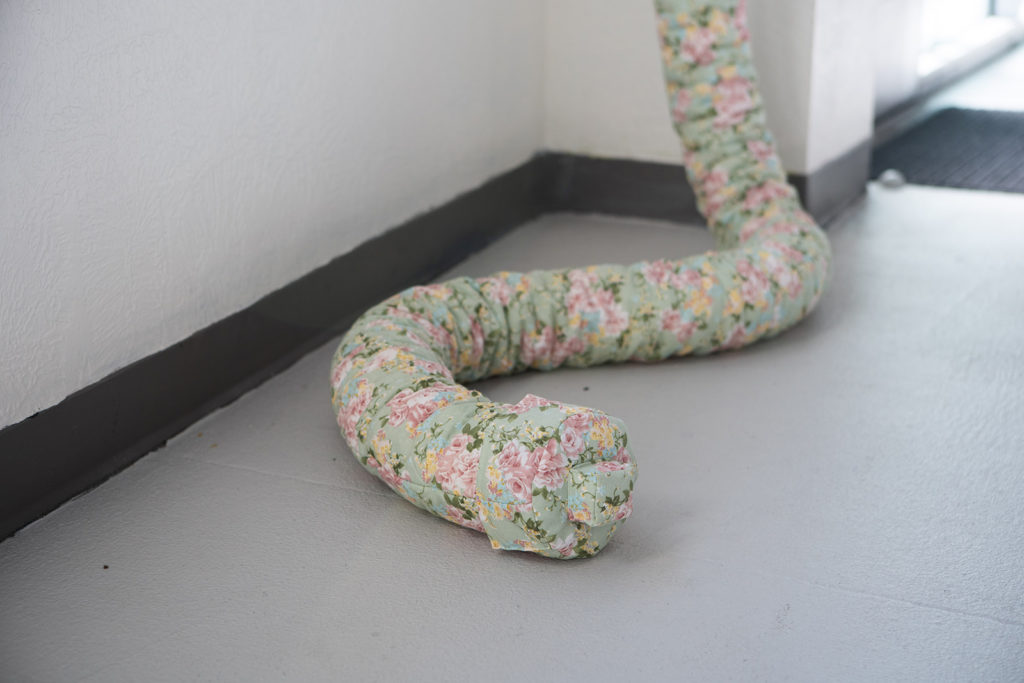
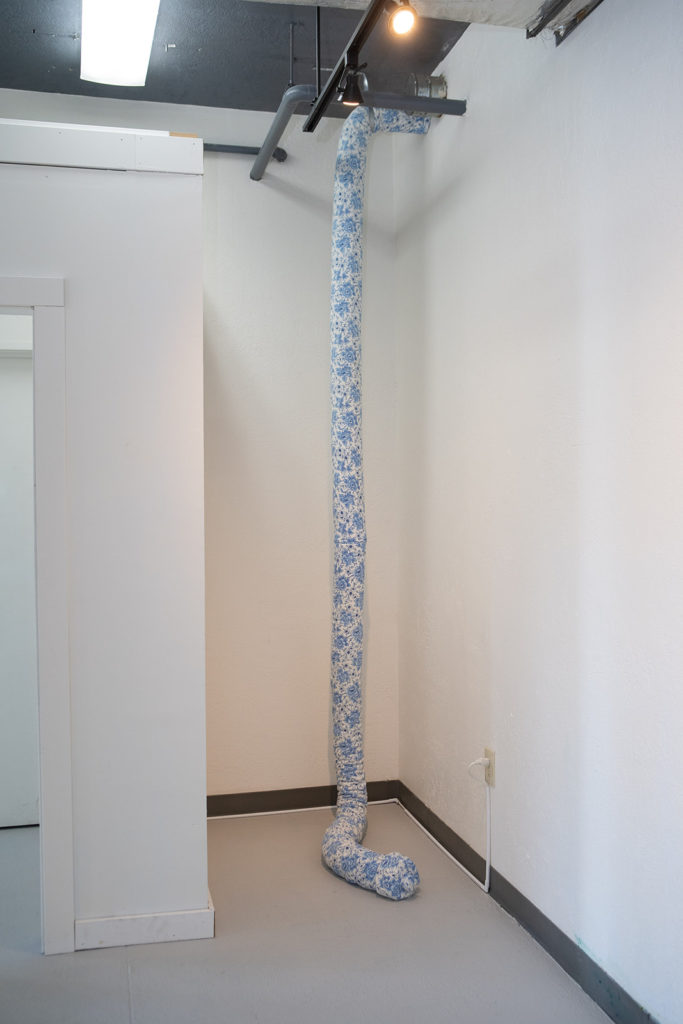
Dana Buzzee’s wall-size installation, Untitled, is created using leather strapping and chains and dominates both its space and my attention. Its linear, centrifugal radiation’s semiotics is reminiscent of a spider web or butterfly wings; bondage and freedom, dominance and vulnerability are suggested as equal and compatible states to contemplate. The use of line in Elnaz Talaei’s, Lines of Threads, is quite a different thing. The multipart wall piece positions me spatially in a way that expands the confines of the small interior gallery space in which it is presented. The several small to mid-size canvases that comprise the work are natural in color and material with spidery, black splotches that, when combined with the black yarn that Talaei loops and extends to and from different points, read map-like. I am on a journey and my sense of exploration and place is activated and encouraged as I follow the various visual pathways.
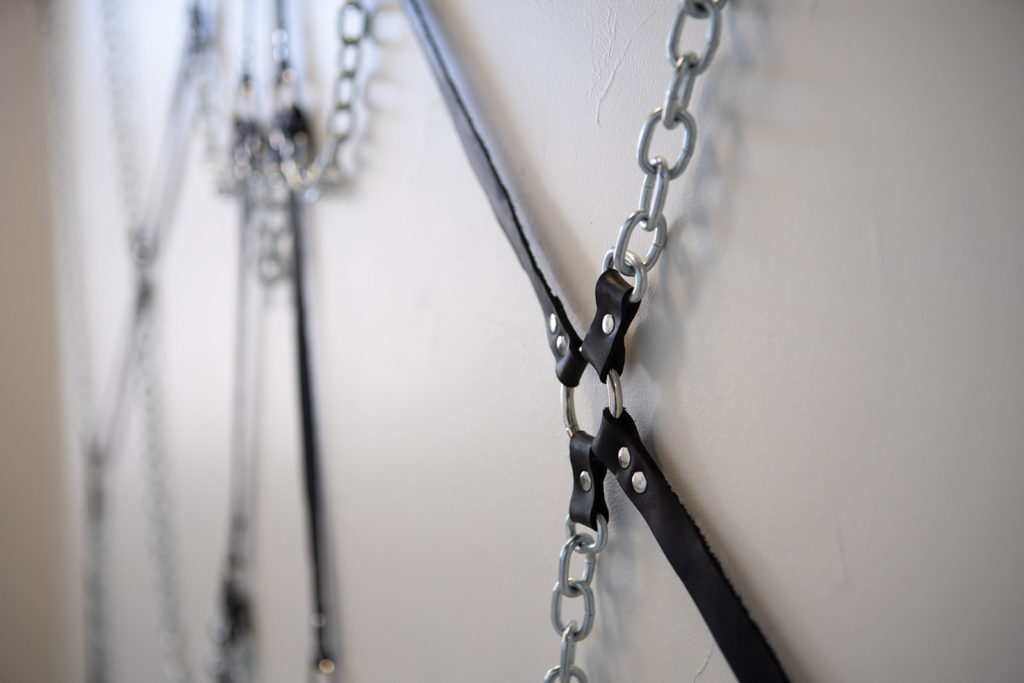
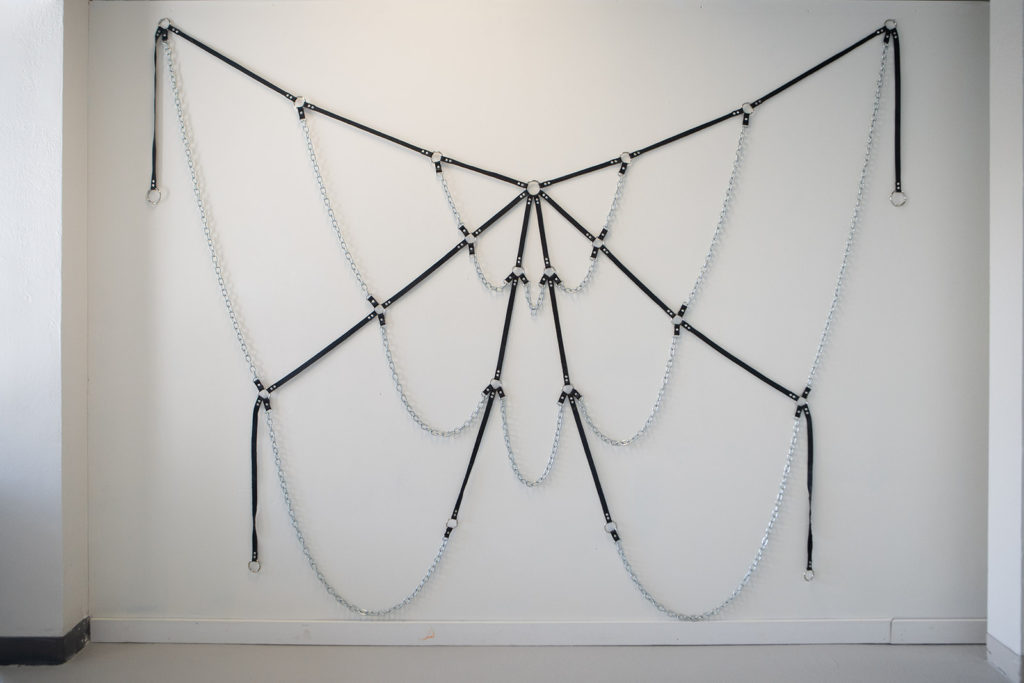
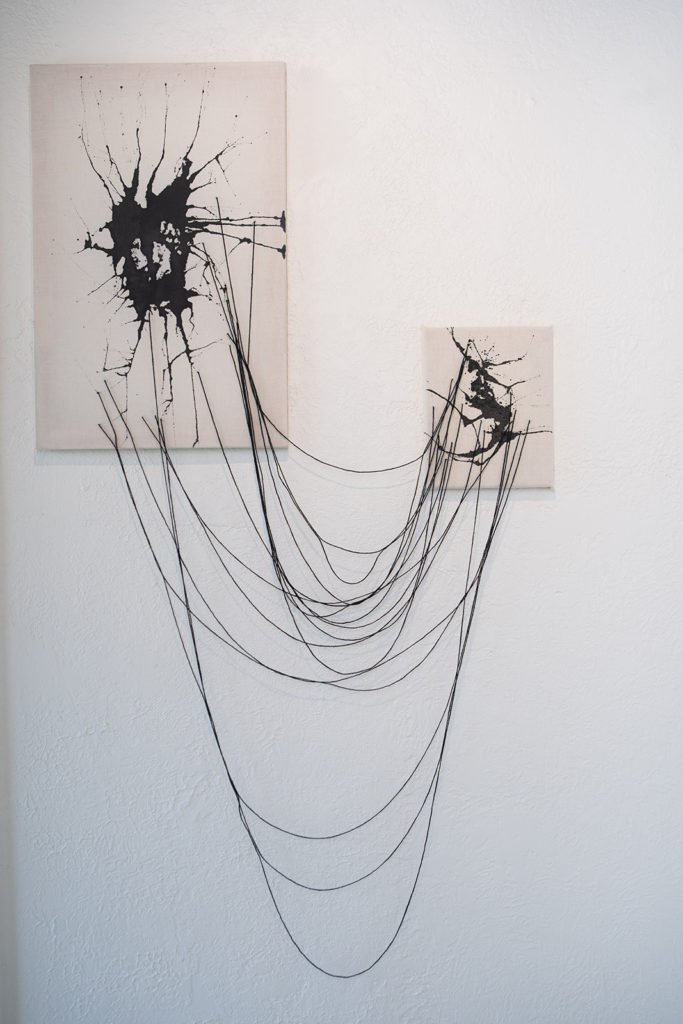
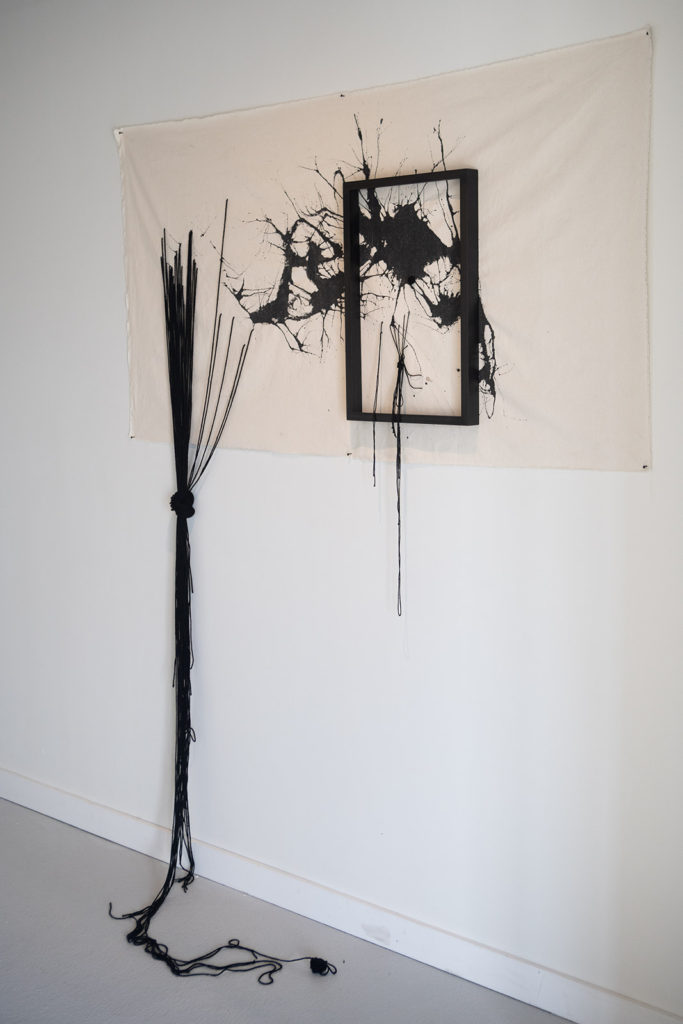
Our five senses work in concert to construct our relationship with the environment, others and ourselves, and the body is referenced either deliberately or by default. In Agnese Cebere’s looped video, wall-size projection, Indexical, the artist’s spoken words illustrate her recorded movements that take place in a narrow, non-descript space. My own body begins to take cues from the video’s described actions and I am implicated in the complex relationship between processing language and experiencing movement.
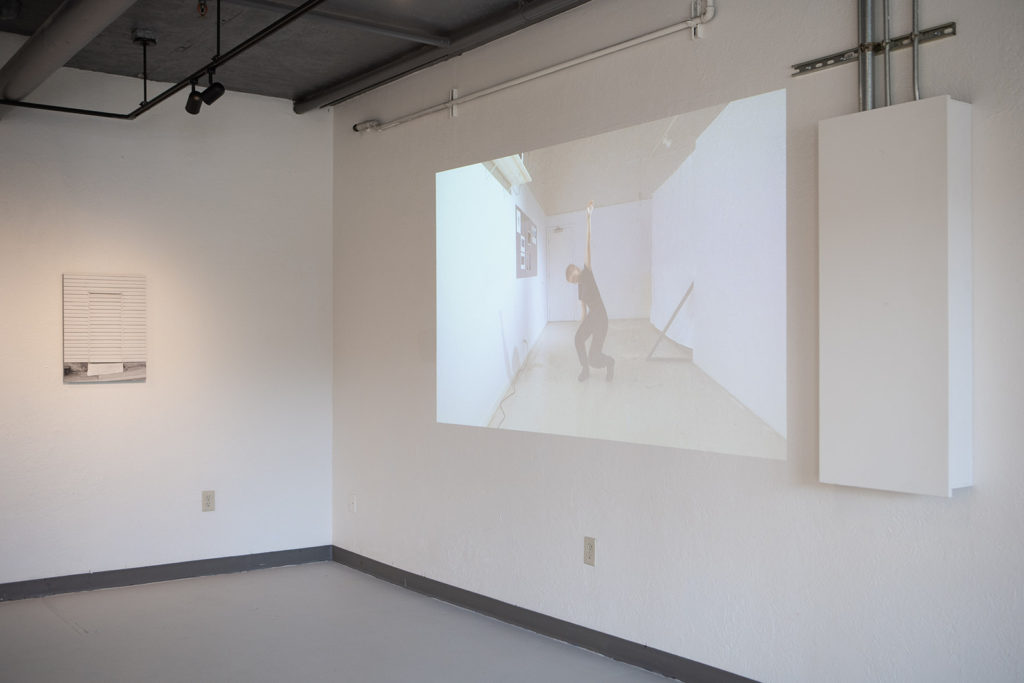
There’s a moment in Cebere’s work in which she assumes a sitting pose that enjoys a striking similarity with an adjacent work’s subject. However, in Sajad Amini’s mid-size achromatic inkjet printed photograph, the fountain, a cultural reference is drawn to Marcel Duchamp’s readymade icon of twentieth century art, Fountain. Amini appropriates both the earlier work and his own body to create a stark portrayal of self as readymade and the essence of individual reality and agency.
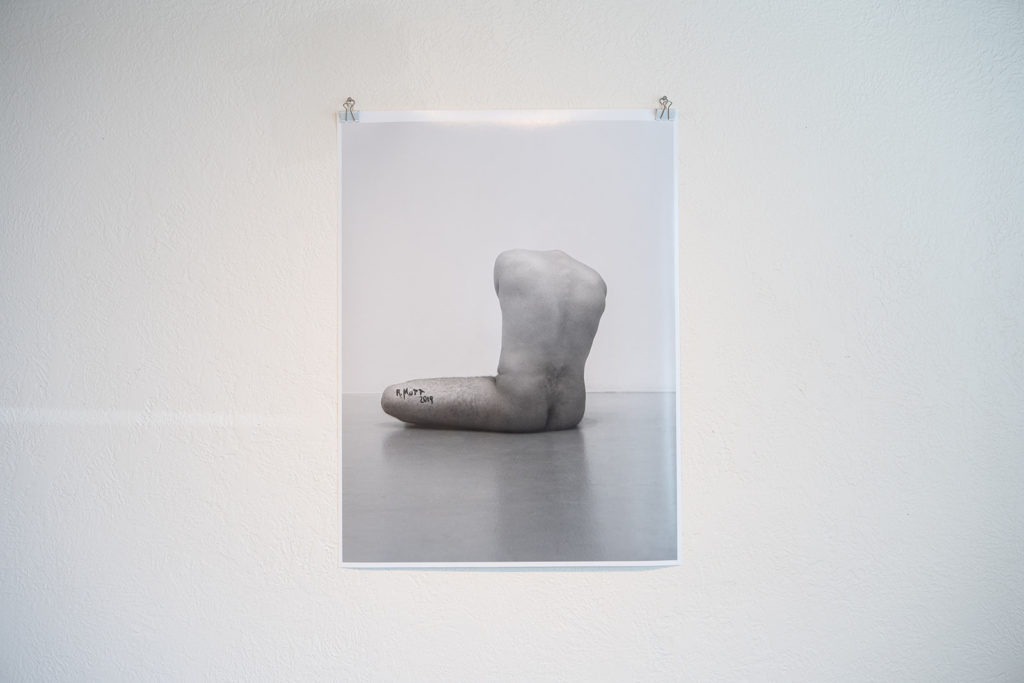
“Under Our Moon Future Ascensions,” as a whole, makes me think of why we make, how we make and the different forms possible, created and valued. Privileged dialog and public conversation is articulated through the artists’ use of varied materials, metaphor, processes and histories. After looking at, listening to and considering the twelve artists of UOMFA, perhaps the thread that ties these varied practitioners together is the most universal of all—community.
Kathleen Caprario is an artist and writer. She is a founding member of Gray Space Projects, and an artist member of Eugene Contemporary Art. She writes for the Register Guard’s Cafe 541 column and teaches in the Art Department at Lane Community College in Eugene, OR.
All photos by Mandy Keathley https://keathleyphoto.com